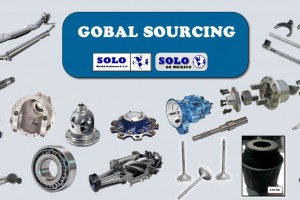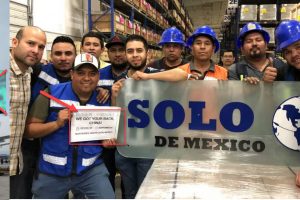A FTZ is for USA organizations only, thus SOLO USA is a FTZ and SOLO de Mexico is an IMMX.
What is a Foreign-Trade Zone?
A foreign-trade zone is a designated location in the United States where companies can use special procedures that help encourage U.S. activity and value added – in competition with foreign alternatives – by allowing delayed or reduced duty payments on foreign merchandise, as well as other savings.
A site which has been granted zone status may not be used for zone activity until the site has been separately approved for FTZ activation by local U.S. Customs and Border Protection (CBP) officials, and the zone activity remains under the supervision of CBP. FTZ sites and facilities remain within the jurisdiction of local, state or federal governments or agencies.”
Foreign trade zones of the United States
A foreign-trade zone (FTZ) of the United States is a geographical area, in (or adjacent to) a United States Port of Entry, where commercial merchandise, both domestic and foreign receives the same Customs treatment it would if it were outside the commerce of the United States. Another definition of an FTZ states that it is an isolated, enclosed and policed area operated as a public utility, furnished with facilities for loading, unloading, handling, storing, manipulating, manufacturing and exhibiting goods and for reshipping them by land, water or air.[1] Merchandise of every description may be held in the Zone without being subject to tariffs (customs duties) and other ad valorem taxes . This tariff and tax relief is designed to lower the costs of U.S.-based operations engaged in international trade and thereby create and retain the employment and capital investment opportunities that result from those operations. These special geographic areas – Foreign-Trade Zones – are established “in or adjacent to” U.S. Ports of Entry and are under the supervision of the U.S. Customs and Border Protection under the United States Homeland Security Council. Since 1986, U.S. Customs’ oversight of FTZ operations has been conducted on an audit-inspection basis known as Compliance Reviews, whereby compliance is assured through audits and spot checks under a surety bond, rather than through on-site supervision by Customs personnel.[2]
There are over 230 Foreign-Trade Zone projects and nearly 400 Subzones in the United States.[3][4][5]
Contents
[hide]
History
The U.S. Foreign-Trade Zones program was created by the Foreign-Trade Zones Act of 1934. The Foreign-Trade Zones Act was one of two key pieces of legislation passed in 1934 in an attempt to mitigate some of the destructive effects of the Smoot-Hawley Tariffs, which had been imposed in 1930. The Foreign-Trade Zones Act was created to “expedite and encourage foreign commerce” in the United States.
Through World War II, manufacturing activity was allowed only on a very limited basis. In 1950, the original act was amended to open up FTZs to manufacturing, but it had little impact until 1980. In that year, Congress again amended the act so that products manufactured in the zones would not be assessed on U.S. value-added. This ensured that the only tariffs a producer inside the zone selling to U.S. customers would pay, would be on the raw materials imported into the zone. This “integrated” model, which replaced the previous “island” model, spurred growth in the U.S. Foreign-Trade Zones program.[3]
Subzones
A Foreign-Trade Subzone is an area approved by the Foreign-Trade Zones Board for use by a specific company. Foreign-Trade Subzone companies enjoy all the same benefits as Foreign-Trade Zone companies, but subzones are located outside existing general-purpose sites within 60 miles of the port of entry. Subzones allow companies that import and/or re-export products to take advantage of Foreign-Trade Zone benefits without having to physically relocate within the Foreign-Trade Zone general purpose sites.
Which companies can be located at an FTZ?
Any company in any industry can apply to be a part of an FTZ. Companies importing to the US on a regular basis and in high volume are the main participants. It is a way to reduce importing costs and save money by participating in special Customs procedures and simplifies processes to run more efficient inventory control systems. The process to register into one is lengthy — 9 to 12 months, depending on the industry and if a FTZ is being created or if you are participating in one that already exists.[6]
Benefits
US Foreign-Trade Zones (FTZs) pose multiple benefits, other than duty deferred and inverted tariff, which companies can use to benefit their bottom line. However, a majority of companies are not utilizing FTZs to their full potential because sometimes the unknown creates uncertainty.[7]
Some of the benefits of operating a FTZ include:[8]
- Improved inventory management
- Automated recordkeeping and document storage
- Increased visibility of the supply chain
- Improved cash flow
- Improved company compliance
Inverted tariff
Inverted tariff benefits exist when the duty rate for the overall finished good is lower than the duty rate of the component parts. Therefore, by manufacturing finished goods within an FTZ, US importers can take advantage of the inverted tariff duty rate, all while keeping manufacturing operations within the US. Inverted tariff works when an importer with manufacturing authority within an FTZ is allowed to admit their components into the zone duty-free, manufacture the finished good, and pay CBP duties on the foreign content in the finished good at the lower duty rate of the finished goods at the time of entry. The importer avoids paying the higher duty rate on the component parts and defers the lower duty payment on the value of the foreign content until the time of consumption in the commerce of the US. Inverted tariff is seen predominantly in the manufacturing industry, benefiting automotive, petroleum, pharmaceutical, aerospace, electronics, textile companies and many more.[9]










